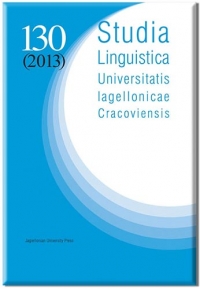POLISH FACES OF ENGLISH ACRONYMS AND ALPHABETISMS: AN ILLUSTRATION OF
CONTACT-INDUCED LINGUISTIC DIVERSITY (PART 2)
POLISH FACES OF ENGLISH ACRONYMS AND ALPHABETISMS: AN ILLUSTRATION OF
CONTACT-INDUCED LINGUISTIC DIVERSITY (PART 2)
Author(s): Alicja WitaliszSubject(s): Theoretical Linguistics, Semantics, Pragmatics, Comparative Linguistics, Western Slavic Languages, Philology
Published by: Wydawnictwo Uniwersytetu Jagiellońskiego
Keywords: acronym; alphabetism; abbreviation; adaptation; language contact; borrowing;
Summary/Abstract: Didżej and didżejować appeared in Polish due to language contact and loanword assimilation processes; the former is the English noun DJ in graphic disguise, the latter is a Polish verbal derivative that conceals the English etymon. The article focuses on discussing and exemplifying the multiple ways in which English acronyms and alphabetisms are assimilated and integrated in the Polish lexical and grammatical systems. Part 1 of the article discusses loanword adaptation processes that have been identified for English lexical loans in several European languages. The linguistic outcomes of loanword adaptation processes, which both occur during the borrowing process and follow it, serve to support an observation that intensive lexical borrowing from English is a change-provoking and development-motivating process that leads to linguistic diversity rather than linguistic homogeneity.
Journal: Studia Linguistica Universitatis Iagellonicae Cracoviensis
- Issue Year: 136/2019
- Issue No: 1
- Page Range: 51-65
- Page Count: 15
- Language: English

